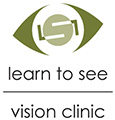Binocular Visual Dysfunction: Is BVD Behind Your Chronic Headaches?

Many people struggle with frequent headaches, dizziness, or even trouble focusing, without realizing their eyes may be the root cause. One lesser-known condition, Binocular Visual Dysfunction (BVD), often hides behind chronic symptoms that traditional eye exams fail to detect. If you’ve been searching for relief without answers, it may be time to consider whether BVD is the culprit.
What Is Binocular Visual Dysfunction?
Your eyes are meant to work together seamlessly, creating one clear, comfortable image. With Binocular Visual Dysfunction, however, the eyes are slightly misaligned, forcing your brain to work overtime to correct the imbalance. Over time, this strain can lead to a variety of uncomfortable symptoms that impact daily life.
Common Symptoms of BVD
BVD can mimic or worsen other conditions, which makes it easy to overlook. Symptoms vary, but many patients experience a combination of:
Chronic headaches or migraines that often worsen with reading, driving, or computer use
Eye strain and fatigue, especially after prolonged screen time or near work
Blurred or double vision, even if it comes and goes
Dizziness, motion sickness, or balance problems (often misattributed to inner ear issues)
Difficulty with depth perception, making it harder to judge distances or catch objects
Light sensitivity (photophobia), especially in bright or fluorescent lighting
Anxiety in crowded spaces, stores, or places with lots of visual stimulation
Difficulty concentrating or staying focused on tasks
Frequent loss of place while reading, skipping lines, or needing to reread
Neck and shoulder pain from tilting or adjusting posture to compensate
Clumsiness or poor coordination, such as tripping or bumping into objects
Eye twitching or discomfort, particularly at the end of the day
If these symptoms sound familiar, BVD may be the missing piece in understanding your struggles.
The Importance of a NeuroVisual Exam
Traditional eye exams focus on visual clarity - how well you can read the eye chart or see objects at different distances. While this is important, it doesn’t tell the whole story of how your eyes work together. Even if you have 20/20 vision, you may still suffer from subtle misalignments of the eyes that place constant strain on your visual system. Unfortunately, these small but significant issues often go undetected in a standard exam.
A NeuroVisual Exam is different. This highly specialized evaluation goes beyond checking eyesight and prescriptions. It is specifically designed to assess how well your eyes align, track, and work together as a team. Using advanced diagnostic tools and precise measurements, a NeuroVisual Specialist can identify tiny misalignments that are responsible for big symptoms like headaches, dizziness, and eye strain.
During the exam, Dr. Les may test your depth perception, eye coordination, focusing ability, and visual processing in ways not covered in a traditional eye exam. This comprehensive approach allows for a more accurate diagnosis and ensures no subtle imbalance is overlooked.
How Specialized Microprism Lenses Can Help
Once diagnosed, BVD can often be effectively treated with microprism lenses. Unlike standard glasses, these lenses contain tiny prisms that gently realign your vision. The result is a significant reduction or even elimination of symptoms. Many patients report immediate relief from headaches, improved focus, and a greater sense of balance and comfort.
Discover If BVD Is Affecting Your Vision at Learn to See Vision Clinic
If you’ve been living with chronic headaches, dizziness, or other unexplained symptoms, Binocular Visual Dysfunction may be to blame. Don’t let BVD continue to interfere with your life. With a NeuroVisual Exam and customized microprism lenses, lasting relief is possible.
At Learn to See Vision Clinic, we specialize in diagnosing and treating BVD. Schedule your NeuroVisual Exam and take the first step toward clearer, more comfortable vision. Visit our office in Minneapolis, Minnesota, or call (612) 724-5125 to book an appointment today.


